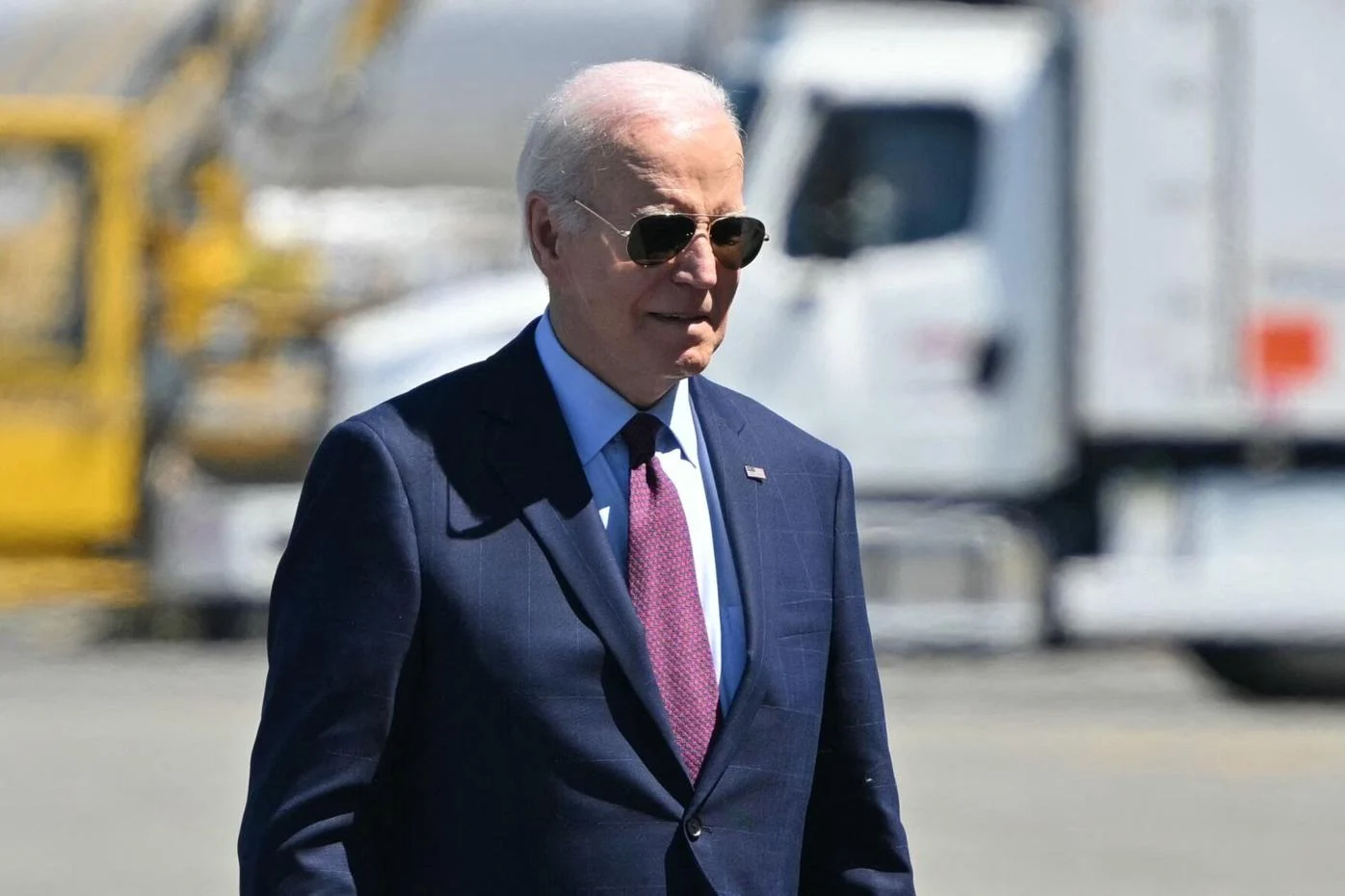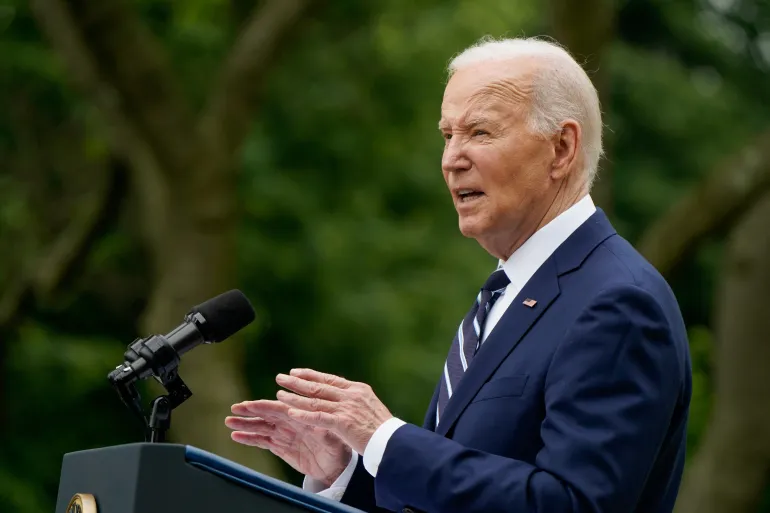A New Phase in US-China Trade Relations
In a significant escalation of Trade War tensions, President Joe Biden has announced new tariffs on a range of Chinese imports. This move marks a pivotal shift in U.S. trade policy and signals a hardening stance against what the Biden administration perceives as unfair trade practices by China. As these new tariffs come into effect, they promise to impact not only the two world’s largest economies but also the broader global trade landscape.
The Details and Immediate Impact of the New Tariffs
Understanding the Scope of the New Tariffs:
Firstly, it’s crucial to understand the extent and focus of the newly imposed tariffs. Targeting sectors where the U.S. seeks to curb China’s dominance, such as technology and telecommunications, these tariffs aim to level the playing field for American businesses and address intellectual property concerns. The decision follows a comprehensive review of trade policies and is touted as a measure to protect U.S. national interests.
Economic Impact on Businesses and Consumers:
Moreover, the introduction of tariffs has immediate and tangible effects on the economy. For American businesses relying on Chinese imports, costs could rise significantly, which might be passed on to consumers in the form of higher prices. This could lead to inflationary pressures at a time when the economy is still stabilizing from the disruptions caused by the COVID-19 pandemic.
Reaction from the Business Community and Market Fluctuations: Trade War
Additionally, the announcement has led to mixed reactions among the business community. While some industry leaders support the move as a necessary step towards fair trade, others express concern over rising operational costs and retaliatory actions by China. Financial markets also reacted with heightened volatility, reflecting the uncertainty about the future of U.S.-China trade relations.
Broader Implications for International Trade and Diplomacy
Global Supply Chains and International Trade Dynamics:
The new tariffs also have profound implications for global supply chains. Companies worldwide may need to reassess their production and supply strategies, potentially looking for alternatives to Chinese manufacturing. This realignment could lead to shifts in trade partnerships and the emergence of new trade blocs as countries adjust to the changing policy landscape.
Diplomatic Repercussions and International Relations:
Furthermore, Biden’s tariff policy could strain U.S.-China diplomatic relations further. As both nations reassess their foreign and trade policies, the potential for a deeper geopolitical rift grows. This situation puts additional pressure on international diplomatic efforts, particularly within forums like the World Trade Organization, where both countries play significant roles.
Responses from China and the Global Community:
Predictably, China might respond with its own set of tariffs or other trade barriers, leading to a tit-for-tat escalation. The global community, especially major trading nations and economic blocs, will closely watch these developments. Their responses, ranging from mediation efforts to the formulation of their own trade strategies, will be crucial in shaping the future of international trade regulations.
Looking Ahead: Strategies and Predictions for Future Trade Relations
Strategic Adjustments for U.S. Businesses:
Looking forward, U.S. businesses might need to adopt new strategies to mitigate the impact of higher tariffs. This could involve diversifying supply chains, increasing investment in domestic manufacturing, or seeking markets beyond China. Such adjustments are essential for maintaining competitiveness in a rapidly changing economic environment.
Policy Considerations for the U.S. Government:
The U.S. government will also need to consider the broader implications of its trade policies. Balancing aggressive trade stances with the need to maintain strong global trade relations will be a delicate task. Policies aimed at enhancing trade enforcement capabilities, supporting industries affected by the tariffs, and engaging in multilateral trade discussions could be part of this balancing act.
Long-term Economic and Political Outlook:
Finally, the long-term outlook for U.S.-China trade relations remains uncertain. While the current climate suggests further confrontation, there is also room for negotiation and compromise. How both nations navigate this complex landscape will determine the future of global trade dynamics, with significant implications for economic growth, political alliances, and international peace and stability.
Turbulent Trade Landscape on Trade War
President Biden’s decision to impose new tariffs on Chinese imports marks a significant moment in international trade. As businesses, governments, and global markets respond to these changes, the actions taken in the coming months will be crucial in shaping the future of not only U.S.-China relations but also the broader architecture of global trade and diplomacy.

Navigating the Local Impact of Global Trade Policies
Effect on Small and Medium Enterprises (SMEs):
The new tariffs are not just a macroeconomic issue; they significantly impact small and medium enterprises within the U.S. These businesses often lack the flexibility or capital to quickly adjust their supply chains and may face higher costs of goods, squeezing their profit margins. This section will explore the specific challenges facing SMEs, including increased production costs and competitive disadvantages in the domestic and global markets.
Strategies for SME Adaptation:
To cope with these new economic realities, SMEs will need innovative strategies. Potential approaches might include sourcing alternative suppliers, investing in local production capabilities, or passing increased costs to consumers without losing market competitiveness. Additionally, exploring government grants and subsidies designed to cushion the blow from such trade policies could be crucial for survival and growth.
Local Job Markets and Employment Trends:
The imposition of tariffs can also influence local job markets. While they may protect some jobs in industries directly benefiting from tariffs, they might jeopardize others, particularly in companies reliant on imported materials. Analysis here would include job trends in affected sectors, potential for job creation in alternative sectors, and the overall impact on the U.S. labor market.
The Technological Race: Innovation and Intellectual Property
Technology Transfers and Intellectual Property Concerns:
One of the underlying issues in the trade war is the battle over technology and intellectual property rights. The U.S. has long accused China of unfair practices, including intellectual property theft and forced technology transfers. This section would detail these concerns, examining how tariffs can be a tool to combat these issues and the effectiveness of these measures.
Impact on Tech Industries and Innovation:
The tariffs also have a profound impact on technology industries that are highly dependent on global supply chains. The costs of components for consumer electronics, software, and other tech products might increase, potentially slowing innovation and increasing prices for consumers. This section explores the implications for Silicon Valley and other tech hubs, considering how companies are adapting to these new trade realities.
Future of U.S.-China Technology Rivalry:
Looking ahead, the U.S.-China rivalry in technology is set to shape the global economic landscape significantly. This rivalry encompasses everything from 5G networks to artificial intelligence and clean energy technologies. The strategies that both nations employ will likely influence not only their economic futures but also their geopolitical standings.
Global Repercussions and the Role of Multilateral Institutions
Impact on Global Trade Systems:
The U.S.-China trade war does not occur in a vacuum—it affects the broader global trade system. Countries dependent on these economies are finding themselves caught in the crossfire, facing collateral economic damage. This section will examine how other global markets are reacting, adapting, or possibly benefiting from this trade standoff.Trade War.
Multilateral Responses and International Diplomacy:
In response to U.S.-China tensions, multilateral institutions like the World Trade Organization (WTO) and the United Nations could play pivotal roles. This part will discuss how these institutions are responding to the challenge, the effectiveness of their interventions, and how they might help de-escalate tensions or facilitate negotiations.
Shifting Alliances and New Trade Blocs:
As a consequence of ongoing tensions, new trade blocs and alliances might emerge. Countries may seek to minimize risk by diversifying trade partnerships away from the U.S. and China. This section explores potential new economic alliances in Asia, Europe, and the Americas, assessing how these new blocs could reshape global trade dynamics.
Charting a Path Through Economic Turbulence on Trade War
The imposition of new tariffs on Chinese imports by the Biden administration marks a significant escalation in the U.S.-China trade war, raising numerous questions about the future of global trade, technological dominance, and economic stability. As businesses and governments navigate these turbulent waters, the decisions made in the coming years will have lasting impacts on global economic structures, international relations, and technological innovation.
Inspired by Al Jazeera News and read more articles here or read previous articles here.
